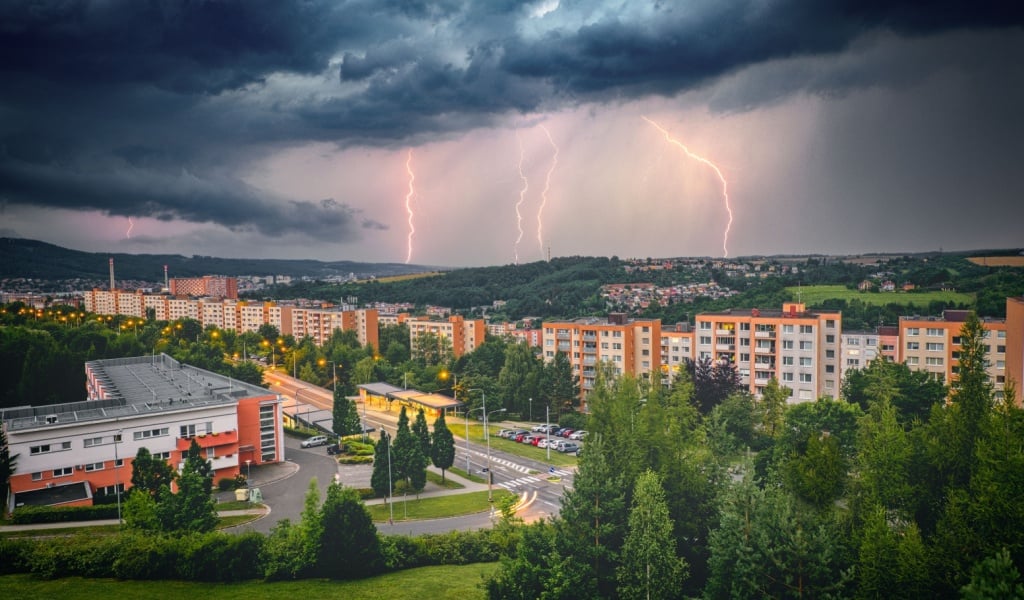One of nature’s most incredible events is lightning. A sudden flash of light in the sky, followed by a crash of thunder, frequently leaves us in amazement. However, have you ever wondered how much energy a lightning bolt contains and whether it can be used for human consumption? Well, get ready for a startling discovery: lightning is a strong, natural source of energy that may just trigger your curiosity about harnessing its potential.

The Energy Contained in a Lightning Bolt
A single lightning bolt can have an incredible influence, generally releasing an energy of around 1 to 10 billion joules. According to Treehugger, a typical lightning bolt can generate about 5 billion joules of energy, equal to the energy required to power 100 homes for a minute or more. If you think that is remarkable, wait until you hear about the extremes: some strong bolts can discharge up to 100 billion joules, enough to power an entire household for one whole day!
The Dimensions of Lightning Energy
To demonstrate how powerful lightning is, let’s discuss its temperature. A lightning strike could reach temperatures around 30,000 Kelvin (53,540°F or 30,000°C), which is hotter than the exterior of the sun. The extreme heat generated explains why a lightning bolt triggers such a strong shockwave that results in thunder and why it can strike with such damaging power.
When considering the scale of lightning, the figures are enough to trigger astonishment. The power in just one bolt is tremendous, but lightning is also very short-lived. A typical strike of lightning strike lasts only for around 30 microseconds, which is just a fraction of a second. Despite the energy it provides, this rapid power surge makes it challenging to capture or store.
Although lightning looks like a treasure house of energy, there are obstacles to making it a dependable source.
Can The Energy of Lightning Be Obtained?
Let’s get to the big question now: Is this energy usable? Theoretically, it would be incredible if we could harness this powerful source of energy. However, as stated in a UNSW article, it is not as easy as rigging a gigantic lightning collector to direct all that electricity into our houses. To begin with, catching lightning is a challenge in itself. Lightning strikes are erratic, unpredictable, and very brief. It’s impossible to wait for a lightning bolt to strike and hope to obtain its energy on request.
Furthermore, the kind of energy involved is also hard to store. Lightning generates direct current (DC), while most of our electricity is alternating current (AC). Converting DC into operational AC isn’t as simple as it might sound, and it would require sophisticated infrastructure to make it function well.
Along with uncertainty and conversion difficulties, capturing lightning requires more than wires and capacitors. A lightning strike’s high voltage (about 100 million volts) might damage any basic storage system. The total power of a lightning strike would completely ruin many traditional materials and devices utilized to store energy, such as batteries. According to energy experts, vast infrastructure and specialized knowledge would be required to securely store and manage such a high voltage.
However, this doesn’t imply that there is no hope left. Scholars are discovering the possibilities of obtaining the power of lightning through indirect methods. For instance, lightning could assist in powering electrical systems in some secluded or remote locations where traditional power grids are inaccessible. Even though the practical, widespread use of lightning energy is not imminent now, there are plenty of reasons to investigate and formulate more effective methods of utilizing these natural events.

Other Possible Uses of Lightning Power
What if there were alternative ways to use lightning’s energy since it cannot be immediately gathered and stored in its present form? For instance, scientists are investigating methods to obtain the enormous heat generated by lightning. UNSW states that scientists are learning the concept of using heat from lightning to activate chemical reactions or even create steam to power turbines, much similar to how the heat from volcanic eruptions is utilized in geothermal power plants.
Another possibility is that it could create a stronger, lightning-proof infrastructure that could manage the electrical overload, enabling more controlled usage.
Lightning could also possibly be used to jumpstart other methods of energy production. For instance, hypothetically, it could assist in igniting fuel or turning water into hydrogen for renewable energy. However, at the moment, these are more of a future vision than an instant reality.
Conclusion
Although the energy filled in a lightning bolt is massive and powerful, its disordered nature makes it tough to capture it for long-term use. However, lightning still provides promising opportunities for future energy investigations. With constant innovation, we may create the technology to store and use lightning’s energy in brilliant methods someday. But as of now, lightning continues to be an unexplored natural resource that fascinates and reminds us of the limitless energy that nature has to offer—if only we could discover how to capture it.
In the meantime, we’ll have to continue watching the sky, hoping that a bolt of motivation will strike us and allow us to capture the power of a lightning bolt!



